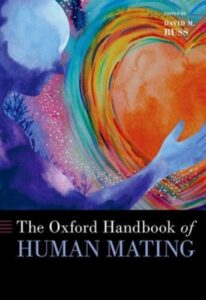
Helen E. Fisher, Justin R. Garcia
The Oxford Handbook of Human Mating
https://doi.org/10.1093/oxfordhb/9780197536438.013.14 Pages 777–795
Published: 26 January 2023
Abstract
Charles Darwin identified two basic forms of sexual selection: intrasexual selection, in which members of the same sex of a species evolved biobehavioral mechanisms to compete with one another to win mating opportunities with the opposite sex—male–male competition and female–female competition —and intersexual selection in which members of each sex of a species evolved biobehavioral mechanisms to attract members of the opposite sex for the purpose of mating—mate choice. Miller proposed that two aspects of mate choice have evolved in tandem: (1) traits of the display producer that evolved to attract mating partners and (2) traits of the display chooser that evolved to discriminate between specic courtship displays and prefer those of specic display producers. Fisher has proposed that a third mechanism evolved in tandem with hominin mate choice: the brain system for romantic love. Regardless of whom the display chooser chooses, this corresponding neural mechanism provides the focus, motivation, optimism, and energy to pursue this preferred mating partner. This chapter first reviews current data on this mechanism of mate choice, romantic love. Then, using a sample of 39,913 single adult Americans, the chapter discusses four broad temperament dimensions that play a role in mate choice today; and using a sample of 28,128 single Americans, it discusses three biologically based patterns of mate choice associated with these four neural systems. Last, using a national representative sample of 55,000 single adult Americans, the chapter discusses contemporary patterns of mate choice that most likely evolved during hominin evolution.